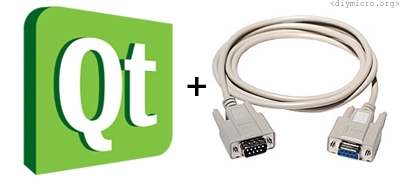In a previous experiment, I made an application (well borrowed) with help of C++ Builder, but I really did not enjoy/like it much. So, I was exploring the web again and found an article. It was much more logical and simple to me, so I decided to give it a shot.
Firstly, we need the Qt SDK. Then we should take sources from here: qt.gitorious.org/qt/qt/trees/4.7/src/corelib/kernel files qwineventnotifier_p.h and qwineventnotifier_p.cpp and place them QtSDKDesktopQt4.7.4mingwincludeQtCoreprivate
Also, download the library dedicated to working with a COM port. Good enough, now we are prepared.







